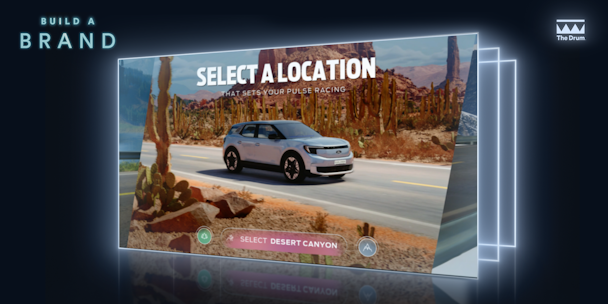Inside Ford’s first-ever virtual car launch
Automotive marketing has always been a reliable staple of traditional agency business. But seismic changes in the car industry have meant the agencies servicing the biggest car brands are being asked to approach marketing briefs in new ways to move the focus in ads away from simply buying a new model.

Inside Ford's virtual car launch / Ford
There has been a big shift in automotive marketing departments from communications first to brand experience first. As such, marketers at brands are asking agencies to think about how events and experiences can support the global strategy, rather than straight comms.
This is where Ford in Europe found itself when it needed to create an experience-led campaign that could work both on and offline for its new all-electric Explorer SUV.
Advertisement
Ford wanted to give journalists and potential customers a way to experience the car and test drive it in the time between the reveal and the SUV hitting the dealerships – which can often be over a year. The carmaker partnered with experience design agency Imagination to find a solution using a blend of offline and online experience marketing.
Imagination’s global creative technology director Simon Levitt helped lead the project. He explains that the agency created three virtual worlds where audiences can ‘test drive’ the vehicle. Consumers were able to explore at home, on their mobile home or on computers and make use of the latest in video game software, Unreal Engine, Levitt tells The Drum. This meant that users didn’t need to download anything and that the experience can be pixel-streamed to a device in real-time. The technology allows users to interact with AAA video game graphics through their browsers.
While the initial reveal drove audience and media awareness, the virtual test drive delivered higher results of consideration by immersing users in the car and giving audiences more time to discover the car’s features.
Advertisement
Lessons from video game measurement
Levitt says you can’t only measure these kinds of online experiences through reach. While organic reach is a factor, you also need to take into consideration the amount of time a user is spending with the brand or product and how they are actively interacting with it.
Online experiences should take the lead from the video game industry and measure engagement by depth, he urges. This includes measuring minutes engaged, time spent experiencing the product and the time the audience has spent actively engaging with the product. By measuring engagement in this way, brands can see how valuable the depth of an experience is and how much active engagement they are receiving.
What do marketers need to know when measuring virtual experiences?
Marketers can take three steps to measure the power of experience, according to Levitt. That’s reach, depth and behavior.
Measuring reach: Measuring reach is critical at the top of a sales funnel, so there is awareness and with the right experience organic reach and brand advocacy.
Measuring depth: Measuring depth will help a brand drive long-term value of its product and will validate an experience’s impact among attendees. By creating a standard metric of engaged minutes, marketers can compare time spent with the brand across any marketing activity, whether this is online, in real life or both.
While the depth of engagement offered by experiences is a key driver of long-term brand value, experiences can be equally as effective in driving short-term conversions. By measuring the behavior, brands can focus on the customer activities that are most important to them, which might include leads generated, products selected and preferred product colors or service options.
Suggested newsletters for you
Measuring behavior: What is critical to understand when designing an experience is the outcome – what is your goal in moving customer behavior? The creative execution should reflect this. It’s not only about having creative that people engage with, but about how this moves your potential customers, so it not only has value for them but for the brand. This will then give your experience outcome-led creative work with measurable ROI.

